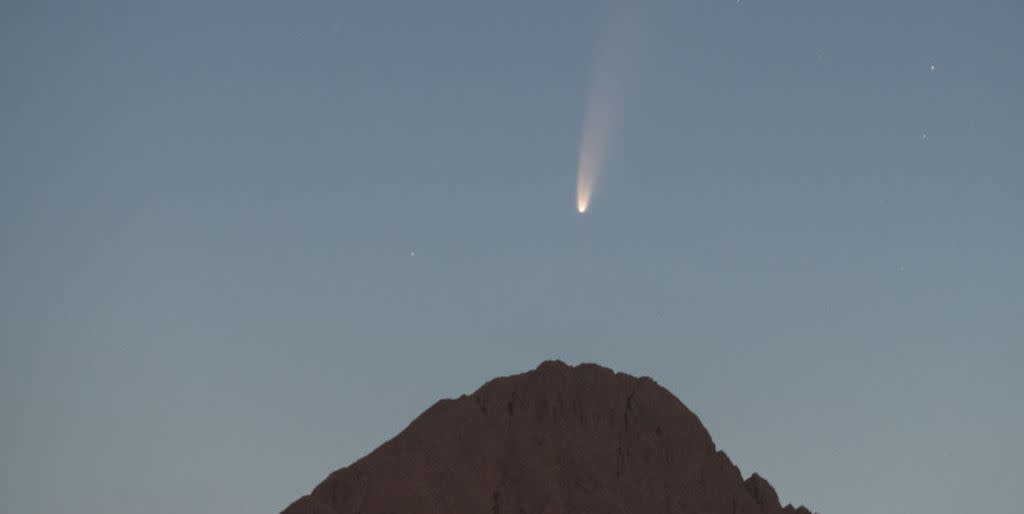You Might Be Able To Catch Sight Of A Surprise Comet This Month

Shining brightly in the night sky, the full "Buck Moon" stole the show from fireworks on the 4th of July. And there's plenty more dazzling celestial sights occurring this month—from Jupiter and Saturn reaching peak brightness to a double meteor shower. Still need more convincing to look up at the sky? A comet (tail and all!) is currently visible.
In late March, the NEOWISE space telescope discovered the comet, cataloging it as C/2020 F3, according to Space.com. Named Comet NEOWISE, it was so far from the sun and shining very faintly at the time it was sighted that it was only visible with large telescopes. Unlike the ATLAS and SWAN comets earlier this year, Comet NEOWISE actually survived its closest point to the sun (perhielion). Unexpectedly, the comet has become very bright and amateur astronomers were able to catch sight of it last week.
So when's the best time to see the comet? Right now, you can see it at dawn. EarthSky reports that on July 11, it will be highest during dawn. Then it will get closer to the horizon each day, and sometime during mid-July it will be visible in the northwest horizon after sunset. Around July 22, it'll be closest to Earth. While the comet should be visible with the naked-eye, EarthSky recommends using binoculars or a telescope for a clearer sight.
If you want to get a glimpse of Comet NEOWISE, you're going to want to take out those binoculars ASAP. As with all comets, Comet NEOWISE could break apart, so pull yourself out of bed at dawn and look up at the morning sky!
You Might Also Like

